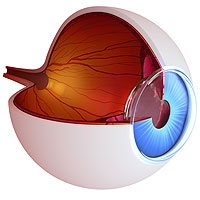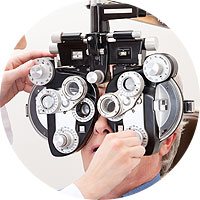Before it was used in LASIK eye surgery, astronomers used Wavefront technology to adjust telescope optics by eliminating irregularities (technically called “aberrations”) caused by the Earth’s atmosphere. We use this same powerful technology to map the hundreds of unique, microscopic aberrations in your own eyes, enabling the Excimer laser to effectively target and correct each error during LASIK.
When Wavefront diagnosis is used to perform LASIK, it is called “Custom LASIK.” Traditional LASIK is diagnosed using a phoropter – the same device used to prescribe glasses and contact lenses. This device is limited to diagnosing the three Lower Order Aberrations: nearsightedness (myopia), farsightedness (hyperopia), and astigmatism. Wavefront goes one step further by diagnosing High Order Aberrations, which make up nearly 85% of all vision errors, and are responsible for problems like:
- Double vision
- Glare
- Difficulty seeing at night
- Blurry vision
- Halos
The “eye map” created by Wavefront also helps make LASIK surgery safer and more precise. If your eye accidentally moves during the surgical process, the laser will move with it, ensuring the most accurate results possible. In the same vein, if your eye moves too much, the laser will shut down completely in order to protect you.
If you have further questions about Wavefront diagnosis or our LASIK technology in general, please contact Eye Care Specialists today or call (877) 489-7405 to schedule a screening. We serve patients throughout Kingston, Scranton, Wilkes-Barre and surrounding areas of Northeastern Pennsylvania (NEPA).

















